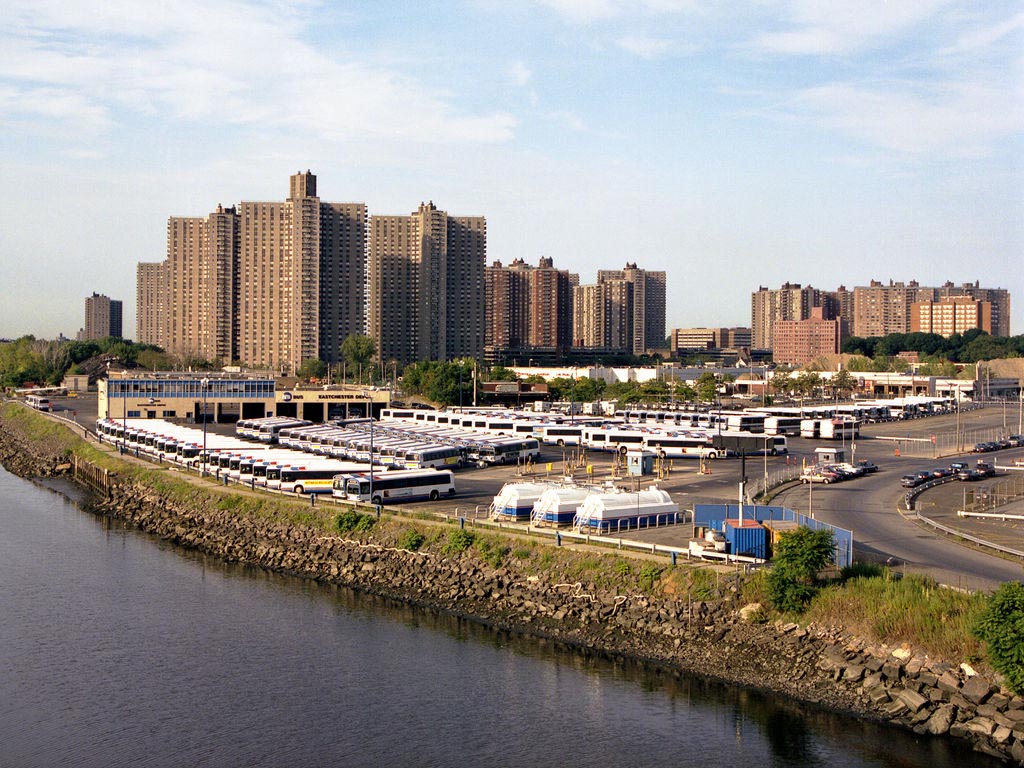
Bus depot adjacent to housing in the Bronx. Photo: Infinite Jeff/Flickr
Dear Mayor de Blasio,
Your campaign platform based on the “tale of two cities” was compelling, highly needed and, as evidenced by your election landslide, popular. Having lived in Manhattan for over 30 years, I’ve watched and experienced the extreme economic and demographic changes first hand, changes which accelerated greatly during the Wall Street- and development-friendly era of Mayor Bloomberg.
Your focus on inequity during the election, though, came at the expense of virtually any discussion of environmental issues. In part, this might have been an effort to differentiate yourself from your predecessor’s emphasis on addressing the environment. From the broad mandate of PlaNYC, to the striking rethinking of city streetscapes, down to one of his final accomplishments, the banning of plastic foam food containers, former Mayor Bloomberg’s environmental accomplishments were huge.
It would be a shame if you de-emphasized – or worse, rolled back – these laws and initiatives, particularly because there is a strong correlation between environmental issues and inequality. The most obvious of these is well-documented: the high rates of asthma in disadvantaged neighborhoods. This arises from the placement of noxious uses where both land values and political clout are lower. Clearly this has health effects, but it also impacts income (lost work and increased health costs for those who can least afford it) and education (lost days at school).
Similar overlapping relationships can be found in other areas including access to mass transit and parks, programs for energy efficiency, and food deserts. (While it’s somewhat understandable that the first test of Citibike was in the densest parts of the city, there’s a strong argument that it’s more needed in areas where transit is less accessible, where bicycles can provide the last mile.) In another significant example, many of the areas of NYC most at risk from storm surges and rising sea levels are the poorer sections of the city.
Overall, this relationship between environmental issues and inequality falls under the definition of environmental justice:
The concept behind the term “environmental justice” is that all people – regardless of their race, color, nation or origin or income – are able to enjoy equally high levels of environmental protection. Environmental justice communities are commonly identified as those where residents are predominantly minorities or low-income; where residents have been excluded from the environmental policy setting or decision-making process; where they are subject to a disproportionate impact from one or more environmental hazards; and where residents experience disparate implementation of environmental regulations, requirements, practices and activities in their communities. Environmental justice efforts attempt to address the inequities of environmental protection in these communities. [source]
The synergisms in addressing inequality and the environment are a perfect example of EcoOptimism: solutions that simultaneously solve ecological and economic problems while also improving our quality of life. Environmental impacts span both halves of the “two cities” with, if anything, harsher effects on the parts of the city you campaigned for. Hopefully, you and the members of your new administration will see the importance of this and expand upon the groundbreaking environmental work of your predecessor.
